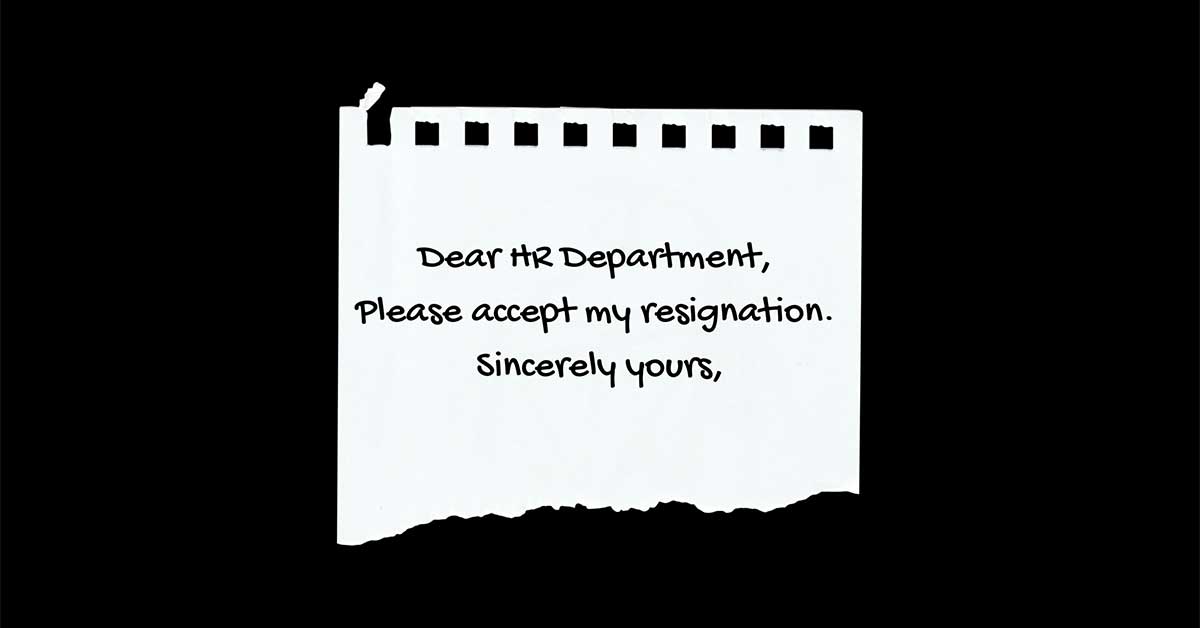In our first discussion around the reasons behind the Great Resignation, we highlighted that while money and other financial benefits are clearly important to employees; it was the less tangible things like “not feeling valued and lacking a sense of belonging at work” that were the real deciding factors for people to stay or go. So today we want to dig a bit deeper and show that leaders and managers who demonstrate compassion, genuine care, and aim to strengthen relationships with employees can reverse the flow of staff exits.
We also spoke last time of the need for companies and their leaders to truly listen to and understand their employees. In current times, leaders need to shine a laser focus on what employees are going through and to pair that empathy with compassion—and determination—to act and change.[1] Employers must get into the nitty gritty of the wants and needs of their employees and work with them to develop the flexibility, connectivity, and a sense of unity and purpose that their people are seeking.
Getting into the real reasons why staff are leaving is also key to help stem the attrition tide.[2] A recent McKinsey article cites that when “employers were asked why their people had quit, they cited compensation, work–life balance, and poor physical and emotional health. These issues did matter to employees—just not as much as employers thought they did. By contrast, the top three reasons employees cited as reasons for quitting were that they didn’t feel valued by their organizations (54 percent) or their managers (52 percent) or because they didn’t feel a sense of belonging at work (51 percent).”[3]
So as a leader what are the next steps you can take to retain your team?
Here are four approaches to consider as priorities for your people:
- Showing Appreciation
As we have stated that although money matters, it is not a primary driver. Overwhelmingly the research shows that relational elements, such as strong relationships and the feeling of being valued by the boss, are key to retaining people. Demonstrating your appreciation of the efforts of individuals and/or to the teams you manage will likely be rewarded tenfold – and appreciation can range from a simple but deliberative thank you to a team lunch or outing or time off – these simple actions will see a very sound return on investment.
- Making Well-being a Priority
Acknowledging a more holistic sense of the wellbeing of your staff and implementing initiatives to encourage ways that your people can prioritise their physical and mental health are very necessary. “When employees have their physical well-being and health, and they feel rewarded for the work they do, they report a 44% improvement in well-being and 21% improvement in their work productivity.”[4] Consider introducing “recharge” days or incorporating a general wellness check-in individually or as part of your teams’ regular catch ups. Plus of course lead by example – during the pandemic all of us have struggled in one way or other, so you will need to ‘walk the talk’ – if you are encouraging a flexible working arrangement for your team, ask yourself “how am I demonstrating that?” Are you working a hybrid office / remote model, are you respecting reasonable working hours and not sending emails, Teams or Slack messages after hours, do you take annual leave and turn your technology off? Your staff will follow the example you set, so set the behaviour, mindset and attitude that you want to see in others.
- Career Development – It Takes Two
A fallout from the pandemic across the globe is that during the periods of lockdown and isolation people have had the opportunity to be more reflective about their lives and lifestyle. This re-evaluation has extended to people’s working lives and caused many to reassess what they do professionally, plus how it adds value and meaning to themselves and their immediate community or beyond – and so this has prompted employees to look at how they can grow their “contribution” and value to the world. This searching for career development does not have to be a scaling up of the corporate ladder; it may very well be employees seeking to “go sideways” to explore other areas in the organisation where they see that they can make a difference and/or add value.
So, encourage your employees to identify how they want to approach development opportunities, both professional and personal, not just because it will make them enjoy what they do but also help them on the journey of finding purpose and meaning at work.[5]
- The Post Pandemic Workplace – A New World Order
The other fallout from the pandemic of course is how the work remotely concept is not the exception but a mainstream expectation. A range of surveys indicate that more than half of the employees surveyed wanted to work remotely at least three days a week.[6] With flexibility and a hybrid workplace a general expectation by the current workforce, make sure you sound out your people to end up with a model that meets both the business and staff needs to get the job done.
Don’t Operate in A Vacuum
Seeking input from your people is key for all four initiatives stated above – do not operate in a vacuum.[7] Also look to them to help shape the plan and solutions. Further as a manager or leader, no matter what level, take the time to think through your next moves. A knee jerk mandate around a back-to-the-office policy or other non-negotiated way forward—no matter how well intentioned— is not going to prevent your people seeking professional satisfaction elsewhere.[8]
[1] https://hbr.org/2021/12/connect-with-empathy-but-lead-with-compassion
[2] https://www.consultancy.com.au/news/4439/the-great-resignation-what-is-it-and-how-can-employers-avoid-it
[3] https://www.mckinsey.com/business-functions/people-and-organizational-performance/our-insights/great-attrition-or-great-attraction-the-choice-is-yours
[4] https://www.mckinsey.com/business-functions/people-and-organizational-performance/our-insights/great-attrition-or-great-attraction-the-choice-is-yours
[5] https://www.mckinsey.com/business-functions/people-and-organizational-performance/our-insights/great-attrition-or-great-attraction-the-choice-is-yours
[6] https://www.mckinsey.com/business-functions/people-and-organizational-performance/our-insights/great-attrition-or-great-attraction-the-choice-is-yours
[7] https://www.mckinsey.com/business-functions/people-and-organizational-performance/our-insights/great-attrition-or-great-attraction-the-choice-is-yours
[8] https://www.consultancy.com.au/news/4439/the-great-resignation-what-is-it-and-how-can-employers-avoid-it




